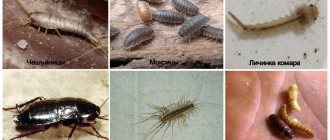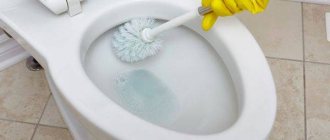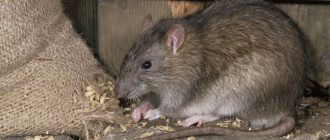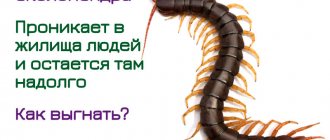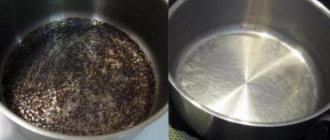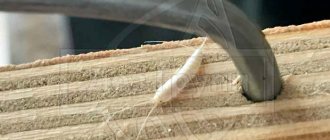Woodlice are pests from the crustacean family, they are usually considered insects, but in fact they are modified crustaceans. By analogy with relatives, they love water and high humidity. They are not harmful to humans, but their proximity is not pleasant. Their sizes range from one to two centimeters, the body is covered with hard segments, like a shell. They lead an active nocturnal lifestyle, so it is not always possible to detect them immediately, but only when traces of their presence become noticeable. If there is a threat, thanks to their flexible body, they curl up into a ball and pretend to be dead. They reproduce by laying up to 30 eggs per day.
Prerequisites for the appearance
In fact, two factors are enough for woodlice to appear:
- too wet;
- too dirty;
They cannot live without moisture and food. If the walls are wet under the wallpaper, there is the presence of mold - that is, woodlice. And in your garden and on your plot it is impossible to avoid their appearance. There is always water, food waste, rotting plants and secluded places where you can breed and feel comfortable.
Ants
Ants that appear in a greenhouse will also cause a lot of problems. They severely damage the root system of plants. Small holes in the ground indicate the appearance of insects.
Fight them
What folk remedies can you use to fight ants:
- Garlic. Insects cannot stand the smell of garlic and will try to leave the room. Garlic cloves are placed on ant paths and next to burrows;
- Borax. The bait with the added substance (0.5 tsp) is placed in different corners of the room;
- Hot ash. Ash is scattered along ant paths and holes;
- Millet cereal. Even though ants like millet, they are unable to digest it, and indigestion leads to their death. Millet is generously scattered next to the minks and on the paths.
Types of woodlice
In total, science knows more than three thousand of these unpleasant creatures of the crustacean family. The most common in nature and residential areas are:
- armadillo;
- centipede or flycatcher;
- earwig;
- scaly woodlice;
- rough woodlice.
None of the species are dangerous to human life and health, they do not spoil property and food, and do not transmit infection.
The most unpleasant thing is their appearance and the possibility of stepping on it. Sometimes they are even useful: by feeding on harmful spores, they cleanse the soil and leaves of plants, preventing the development of disease and death.
General description of insects
Woodlice are classified as a suborder of crustaceans. Under natural conditions, these small pests reproduce and live in rotten wood and damp litter. They do not pose any particular danger, but the very proximity to these creatures causes disgust and hostility.
Their activity peaks in the spring and autumn months. They breed in the summer. In this case, the female keeps the eggs in a special sac attached to her body. She moves with him from place to place until she finds a place that is safe for the development of larvae. It is easy to distinguish these insects by their appearance. They have a rounded body, which is divided into sections:
- head;
- chest;
- stomach.
What is surprising is that these creatures breathe through their gills. During their existence, woodlice have managed to adapt to land conditions.
Where do woodlice live?
As is clear from the very name “woodlouse”, they live where it is wet and humid. Favorite parameters: air temperature +25 °C and humidity 95%.
In nature
Woodlice feel comfortable in the wild; this is their natural habitat. Favorite places:
- fallen leaves;
- rhizomes of trees and stumps;
- walls overgrown with grass;
- bases of shrubs;
- wet foundation.
Woodlice feed on putrefactive plant remains, stalks of ears of corn, and young shoots. Food is not as important to them as water; if their gills dry out, the insect will die.
In the apartment
Favorite habitats are the toilet, bathroom and kitchen. In private housing construction they live in basements, cellars, and attics. If the apartment is humid, there is increased condensation on the walls, then it is possible that wood lice live next to the fungal mold under the wallpaper and behind the radiators. They feed on putrefactive foods, so the accumulation of food waste in the trash can also contributes to their appearance in the home.
If you are a lover of indoor plants, then moist, fertilized soil can successfully replace natural soil and become a source of food.
Preventive measures that will rid your home of the invasion of woodlice, these moisture-loving creatures:
- install good ventilation;
- eliminate places where there is water leakage;
- dry the air;
- fill all the cracks with silicone, pay special attention to the joints of the baseboards;
- remove fungus and mold;
- prevent the accumulation of garbage and food waste;
- check areas behind pipes and ventilation grilles;
- Install light lamps in basements and cellars - woodlice do not like light.
In greenhouses
These pests enter greenhouses from the external environment, following the smell of fresh fruits or vegetables, as well as in search of a place with the highest humidity. The greenhouse effect creates the most favorable conditions for the existence and reproduction of woodlice.
If there are holes with household waste on the site, carrion on the ground, cut branches or old trees, rotting fallen leaves, places of constant watering, then soon you will have to fight the incursion of these small, unpleasant-looking creatures both on the site itself and in greenhouses.
Special baits
The duration of action of some drugs is several hours, if the dose and concentration are observed.
Tarax
A universal substance against ants, bedbugs, cockroaches and woodlice – Tetrix insecticide.
Bought for 80 rubles. 1 g of the drug, diluted in a glass of water (200 ml), can destroy all insects and crustaceans on the area treated with a spray.
You can use the bait regularly, as it is not addictive.
Tetrix
Woodlice, fleas, ticks and bedbugs disappear completely after 2 days when using the new Tetrix product. Its constituent cypermethrin is a pesticide that is often found in home gardens and agriculture.
250 ml of the drug is relatively expensive - about 2000 rubles. Using the product for a small house or apartment is expensive. But when there is an invasion of woodlice in multi-storey buildings, it is still cheaper than calling special services.
Damage caused
The biggest danger greenhouse plants face is becoming a food source for woodlice infestations. By eating the roots of young shoots, they destroy the root system and the plant itself. Both leaves and all seedlings may be damaged. At the same time, soil compaction occurs, which prevents the supply of sufficient oxygen.
If the plant dies without visible signs of disease, it is worth loosening the soil around it and checking for pests. Also, checking in the dark will immediately reveal nocturnal eaters of young seedlings. Woodlice reproduce very quickly, and the greater their number, the more food they need, which means more and more shoots will die day by day. The measure will have to be taken urgently to preserve the harvest.
The main enemy of greenhouse plants is the spider mite.
Of the greenhouse insect pests, the most dangerous is the spider mite.
As soon as the surface of the leaf is covered with a scattering of white dots, and then a cobweb appears, it means there is a spider mite in the greenhouse. Reproduction in insects occurs at incredible speed. Females are active: they lay clutches of 300-400 eggs each. The microclimate of the greenhouse is a real paradise for spider mites. At first, the pest damages only the leaf, but later, when moving along the stem, it devours young leaves and fruits. The main source of nutrition is cell sap. The leaves begin to dry out, die, and the plant dies.
How to get rid of it?
It is quite difficult to combat the pest, since it quickly adapts to chemicals. Ways to get rid of spider mites:
- Creation of increased air humidity. The tick has poor tolerance to high humidity, so in the greenhouse it must be maintained at 85%;
- Compliance with crop rotation;
- Invasion of a greenhouse structure by a phytoseiulus mite or a predatory bug that feeds on spider mites;
- Preventive actions. Carry out regular inspection of leaves. Tear off leaves with insects and burn them. Weed in a timely manner and carefully remove all plant residues.
If these methods are ineffective, more stringent methods are used:
- Spray with colloidal sulfur. Dissolve 80 g of sulfur in 10 liters of water, carry out the spraying procedure once every 10-15 days;
- The drug "Bitoxibacillin". 100 g are diluted in 10 liters of water, sprayed once every 10-15 days.
In emergency cases, chemical agents will come to the rescue. Follow the instructions during use. Since the drugs are highly toxic, processing is carried out strictly in protective suits, goggles and gloves.
How to deal with woodlice
To begin with, you should stop the factors that contribute to their appearance:
- regulate the intensity of watering;
- in greenhouses, do not allow air to stagnate, ventilate frequently;
- avoid fertilizers that are prone to rotting;
- remove everything that can rot and get wet: boards, branches, weed piles;
- avoid the presence of food residues;
- thin out the beds in a timely manner;
- provide sufficient light;
- avoid stagnation of water after watering;
- remove waste immediately after finishing work in the greenhouse.
If, nevertheless, you find traces of woodlice or themselves, then you should choose how you will get rid of them.
Folk methods of struggle
For plants, as for humans, traditional methods are considered the most harmless. To use them, a set of standard components that are available to every gardener is enough. And in price they are much cheaper than special chemicals:
Boric acid solution. Pure water is mixed with boric acid at the rate of 1 g per 100 ml of liquid. Mix well and spray the soil with a spray bottle. When a woodlice gets on the shell, a destructive action begins and the insect dies.
Powdered kvass. Dissolve 100 g in half a liter of boiling water, let dissolve and leave for 20 minutes. Use the resulting solution to treat the premises, including the walls. After two hours, ventilate the room well.
Soda solution. If you mix baking soda, ground red pepper and tobacco mixture in equal proportions, you will get a powerful tool for destroying harmful crustaceans. The resulting mixture is infused for half an hour in boiling water, covered with a towel. Then the places where woodlice appear are sprayed.
In an apartment where there are no plants that can be harmed, the following means are available:
- Saline solution . Regular table salt is diluted in hot water, the steeper the better. Using a sprayer, apply to all places where wood lice are expected to be present. Salt can simply be sprinkled in the corners in its pure form;
- Chlorine solution . Add 50 ml of bleach to a liter of water and wipe all surfaces, corners, joints and folds with high humidity. This is also an additional disinfection of the room;
- Quicklime . Place a bucket with it in the abode of woodlice for at least three days. Afterwards, ventilate thoroughly to avoid poisoning. Suitable for non-residential and utility rooms, basements and attics.
Miracle traps. You can make them with your own hands at home. The simplest and most effective methods of fighting using traps:
- Wet birch broom. It is enough to spread a few pieces overnight around the perimeter of the greenhouse and in the morning you will collect a decent harvest of harmful insects.
- Round holes are cut out in tubers of potatoes, carrots or apples with a knife and left among the plants, scattered in random order. Woodlice will be drawn to the smell of tasty and fresh food, thereby driving themselves into a trap. In the morning, fruits infested with insects must be destroyed. This is a rather expensive method; if there are a lot of woodlice, then given the small size of the fruits, a large number of them will be required to collect all the unwanted guests at once.
- The cheapest method is to leave a large amount of wet rags or rags in the dark - the woodlice will gather in their favorite wet places and you will just have to burn the homemade bait.
Special preparations
For those who want to get rid of the scourge quickly and effectively, and do not want to bother with “grandmother’s” recipes, it is better to purchase ready-made products for combating woodlice. On store shelves you can find granules, gels, powders and sprays for treating affected areas. You shouldn’t overuse chemicals, no matter how much manufacturers claim that they are harmless; if pests die from them, then how can they be useful to plants, from which crops will then grow and end up on the table?
Always balance the need for use with the possible harm.
The most famous drugs:
- Grom-1 and Grom-2 - microgranules in 10 g bags. Suitable for treating soil, trees and plants themselves. Easy to use: granules are scattered in insect habitats and work as a kind of bait, attracting them to you. After entering the esophagus, the pests die; it takes 3 days for complete destruction. The second version is even more effective: the granules have become so small that they need to be mixed with the ground, otherwise the wind will blow them away from the chosen place. It not only destroys woodlice, but also extends the protective effect by 90 days. One package is enough to treat 10 m². When using the drug, protect your hands with gloves;
- Varan is a new generation of dichlorvos, non-toxic and almost odorless. When sprayed near people and animals, it does not cause harm. Death from direct contact occurs within five minutes, for the rest - after five hours;
- Aktara is a preparation for soil treatment. Penetrating into the roots of the plant, it turns food into the cause of death of nasty crustaceans. The product is mixed in a certain proportion with settling water and the beds are watered; the leaves and visible stems of the plants are additionally sprayed. In order not to destroy the shoots together with woodlice, you must strictly follow the instructions given and observe the dosage;
- Tarax is a professional means for combating woodlice; they are used by specialized companies; finding them on the open market is not very easy. It has the form of a powder, which is diluted in a certain proportion with water and applied to the surface, prolonged action up to 70 days;
- Fozallon - actively fights against various pests, not just woodlice. The maximum effect occurs after two days, the effect lasts up to one month. A distinctive feature of the drug is that it is effective even at low temperatures of up to 12 degrees Celsius.
- Metaldehyde and all preparations based on it contact the mucous membranes of pests and cause their death. Scatters in the form of crystals in the intended habitats or in visible areas of the lesion.
It is not advisable to use dichlorvos in greenhouses, as it is quite toxic even to humans. It is enough to spray a cloud of the drug on the habitat of woodlice to ensure their death. Work should be carried out with gloves and a protective mask; inhaling vapors is harmful to health. After use, ventilate the room for at least two hours until the odor disappears completely.
When using pesticides, it is worth remembering that plants will also take their dose of poison and it will no longer be possible to call them environmentally friendly. Also, woodlice are able to develop immunity to frequently used poisons, which means that after a certain time they will no longer perceive it and the product will have to be changed. And most importantly, follow the instructions exactly; doing it on your own can lead to the death of the plants.
Biological characteristics of the pest
Woodlice, like its closest relatives: crabs, shrimp and lobsters, breathes through gills, therefore, being a land dweller, it stays close to water. Tolerates long-term drought thanks to special air cavities resembling trachea. The latter are characteristic of land animals. In 3 months, the crustacean becomes sexually mature, reaching 2 cm in length. Some species of woodlice grow up to 40 cm in the wild.
She, like all arthropods, has an exoskeleton in the form of a chitinous covering of different shades of gray. The shell interferes with growth, so she sheds regularly. 7 pairs of walking legs extend from the body segments, allowing for rapid movement. Long whiskers are designed to “scan” the surrounding space. When in danger, the crustacean twists its body and pretends to be dead.
When in danger, the woodlouse pretends to be dead
Woodlice live on average 9-12 months. They come out of their hiding places at nightfall. They feed on both garden and indoor plants, mosses, bark, algae, musty vegetables and fruits. Damaging plants, they leave holes, and only on the outside of the leaves.
In a city apartment, these crustaceans sometimes inhabit flower pots with loose soil containing fallen leaves and moss. Can damage the roots of orchids, cacti, ferns and other indoor plants.
That's the kind of domestic woodlouse she is. How to get rid of it is a more pressing question.
How to protect a greenhouse
It is important to understand that it is better to prevent the appearance of parasites that harm growing garden crops than to later fight them using various methods.
To ensure that your greenhouse and its future harvest are not damaged:
- after harvesting, pour boiling water over the soil and dry thoroughly;
- for prevention, use one of the traditional methods or an approved chemical drug;
- treat all external surfaces with a disinfectant solution: a concentrate of water and laundry soap is suitable; for greater effectiveness, add copper sulfate to the solution;
- periodically renew the soil to prevent rotting;
- provide sufficient light and good ventilation;
- Avoid moisture accumulation and condensation.
Woodlice do not cause global harm to either human health or seedlings, but the very understanding that unpleasant insects are crawling on fresh leaves causes a feeling of disgust. Follow simple rules, and these moisture-loving crustaceans will bypass your warm, light and dry greenhouse.
Preventive measures
You already know where woodlice come from in the bathroom and what attracts them. Disturbed microclimate of the room, lack of cleaning and light are three reasons for living next to them. Therefore, we must begin to destroy them by eliminating favorable conditions for them.
Cleaning
Throw away old sponges, napkins, mats, and trash. Wipe down all surfaces, including walls, under sinks, bathtubs, and the bathroom fixtures themselves. It is better to do this with some detergent. It is not necessary to repeat this cleaning every day. Once a week or a little less often is enough.
Dry the bathroom and keep it in that condition. After using the shower or sink, wipe up spills on the floor, wall, and surrounding objects. Try to follow this rule at least once a day. Check all pipes for damage and replace leaking areas. The slightest leak will delay the process for a long time.
Access limitation
How to remove woodlice from the bathroom and toilet so that they do not appear again? One of the most effective means is to seal all the cracks and cover the ventilation with a fine mesh. Fix any leaks and inspect the floor and walls for cracks. If there are any, seal them with silicone sealant. Also close the gaps between the bathtub, sink and wall. Gaps in water pipes can be sealed with alabaster or foam. Perhaps the source of the invasion is not in your apartment. Inspect the ventilation mesh - are there any holes in it?
Creating a favorable microclimate
Leave the bathroom door open and ventilate the apartment after each water procedure or at night. Check if the ventilation is working well. This can be done using a paper strip. Open the windows and door, hold the leaf to the hood. If it sticks to the hole, then everything is fine. Having a heated towel rail or heater on helps a lot - their heat will dry the water faster. If possible, avoid drying large amounts of clothing indoors.
Prevention measures
To reduce the risk of woodlice appearing in the house, you should create conditions that are not suitable for their existence. Crevices in bathrooms where moisture accumulates, leaking pipes, clogged ventilation passages, constant condensation - all these are favorable conditions for crustaceans to stay. There are several ways to improve sanitary conditions in an apartment or country house:
- repair risers and plumbing units;
- install mesh for ventilation;
- use acrylic sealants;
- transplant the plants into clean, prepared soil;
- do not dry clothes in the bathroom;
- ventilate rooms daily.
If woodlice cannot enter the house from the attic or basement, then the problem will disappear by itself. They cannot exist without moisture, so when its level is high, heaters (suitable for winter and off-season) and dehumidifiers (used in summer) should be used. The optimal moisture level in the apartment is 60%.
In cases where it is impossible to get rid of high humidity, use traditional or chemical methods to remove unpleasant guests from the house. The former are more accessible, the latter act quickly and help when the number of woodlice is too large.
If there are a lot of woodlice in the garden, then what kind of soil is it, what kind of soil does woodlice weed like?
Woodlice is not picky about soil; however, it does not grow well on sandy soil. It loves dark places and can even grow under boards and bricks. The main condition for active growth of woodlice is moisture. The stem of this herb is very thin and delicate, covered with fine hairs, thanks to which the plant accumulates and retains moisture.
Excellent places for woodlice to grow are under low bushes, in potato fields, in cucumber beds and greenhouses with tomatoes and peppers.
Woodlice likes to grow with other weeds
The acidity of the soil is not so important for this moisture-loving plant; the main conditions are the presence of useful minerals, warmth and moisture.
